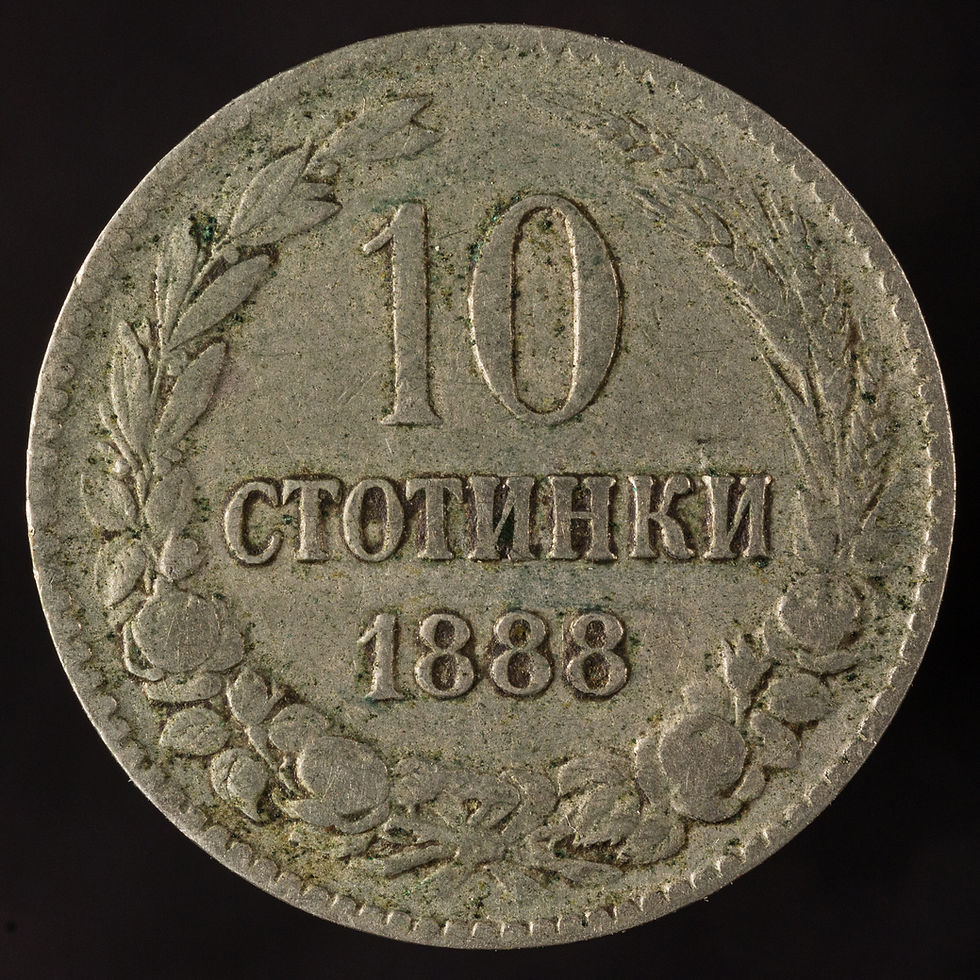143 Politics at its best and worst
- Eric D. Halsey

- Aug 30, 2021
- 3 min read
As Bulgaria and Eastern Rumelia each face the many problems associated with their new independence, they take very different approaches. Meanwhile, Prince Alexander becomes ever more frustrated with his position as election after election fails to get him what he wants.
Major Characters in this Episode
Prince Alexander
Tsar Alexander II
Alexander Bogoridi
Prince Carol of Romania
Ivan Guesheff
Petko Karavelov
Stefan Stambolov Jiří Prošek
Bishop Kliment
Petko Slaveikov
Dragan Tsankov
Timeline for this Episode
29th July 1879, On the Prince’s orders, the structures of the government and ministries are modelled on those of France.
31st July 1879, The founding of the first diplomatic missions for Bulgaria in Constantinople, Belgrade, Bucharest.
July 1879, In Plovdiv, the first electric light is established.
5th August 1879, The first issue of the newspaper Narodni Glas is released in Plovdiv. It represents the Eastern Rumelian National Party.
12th August 1879, The Danubian navy is formed.
16th August 1879, Bulgaria removes import taxes on goods from Macedonia, Adrianople, and Eastern Rumelia.
26th August 1879, Preliminary rules for the governing of villages, cities, and municipalities are published. They introduce age, education, and property requirements for officeholders.
20th September 1879, The first official visit of Prince Alexander abroad is to Bucharest to meet Carol. The Prime Minister takes his role while he’s gone.
12th to 19th October 1879, The first Parliamentary elections are held, the Liberals win 140 seats while the Conservatives win only 30.
17th October 1879, Knyaz Alexander Bogoridi, Governor of Eastern Rumelia, lays the first stone for the renovation of Stara Zagora along the new plan following its destruction in the recent war.
19th October 1879, Elections for municipal assemblies in Eastern Rumelia are won by the Bulgarians with 31 elected deputies compared to 2 Turkish and 3 Greek. 40 Total Bulgarians hold office in the 56 member assembly. Ivan Guesheff is elected as President of the Assembly.
20th October 1879, The first head Rabbi in Bulgaria, Gabriel Almoznino.
24th October 1879, Metropolitan Grigori hands over clerical power in Northern Dobrudja to the Romanian Orthodox Church.
October 1879, Exarch Iosif I visits Knyaz Alexander. On his way back through Plovdiv he calls an assembly of the Clergy of Eastern Rumelia to decide on how the church in the region should operate.
2nd November 1879, The first Bulgarian National Assembly commences, chaired by the Liberal Petko Karavelov.
3rd November 1879, The Municipal Assembly of Eastern Rumelia begins work, chaired by Ivan Geshov.
13th November 1879, General Governor Alexander Bogoridi issues an order which turns a recently founded military organization in Eastern Rumelia into a militia reserve. These groups were ostensibly sports groups. 100k volunteers would participate in these groups in their first few years of operation. Their strength helped convince the Sultan not to use troops to occupy Eastern Rumelia.
30th November 1879, The first all female high school in Sofia is founded.
5th December 1879, The first National Assembly is dissolved by Alexander. He then appoints a new temporary cabinet headed by Bishop Kliment Branitski, aka Vasil Drumev.
22nd December 1879, Elections for the permanent committee of the Regional Assembly of Eastern Rumelia. Bulgarians win all 10 seats and Ivan Geshov remains chairman.
1879, The first telephone line in Bulgaria is established between the residency of Bogoridi and his office.
2nd January 1880, A “memoir” of the Macedonian Bulgarians in Constantinople addressed to the ambassadors of the Great Powers arguing for the creation of a Bulgarian Vilayet in Macedonia.
15th January 1880, The first city plan for Sofia, proposed by Knyaz Alexander and created by engineer Irzhi Proshek, begins the radial structure of the city.
22nd January 1880, Exarch Iosif I permanently settles in Constantinople, although the Ottomans, Patriarchate, and Russia all oppose this move. He is accepted as the head of the Bulgarian church in Eastern Rumelia.
25th January to 1st February 1880, New elections to the National Assembly see the Liberals win again.
4th April 1880, the Second National Assembly begins working chaired by Petko Karavelov and Petko Slaveikov before the chairmanship begins to operate on a rotational basis.
5th April 1880, A liberal government headed by Dragan Tsankov is appointed by Knyaz Alexander.


I highly recommend you check out Stara Sofia for way more photos and information about Sofia in this period.





Comments